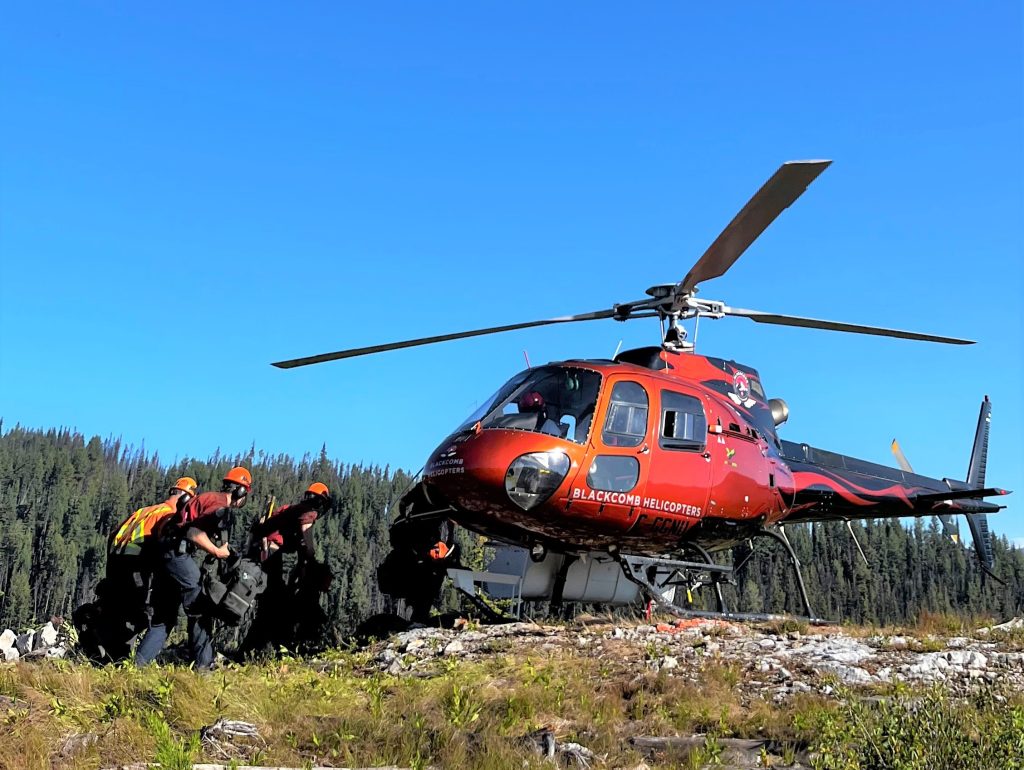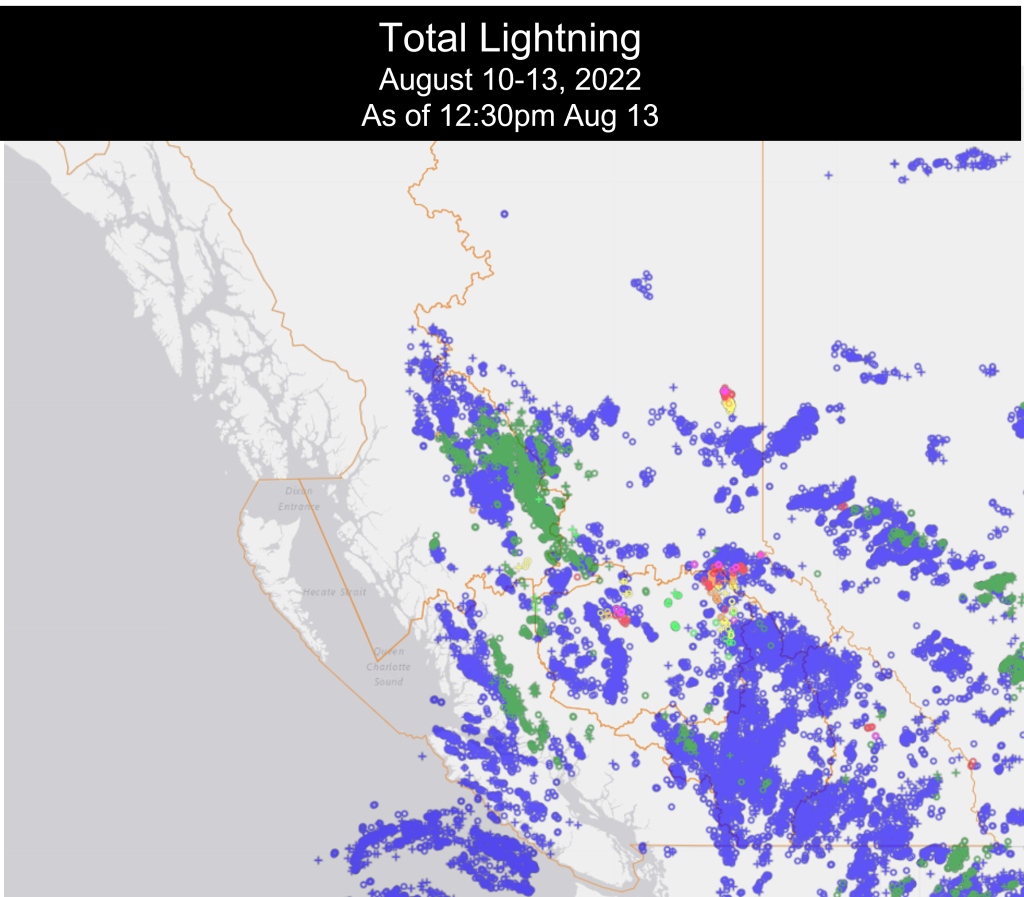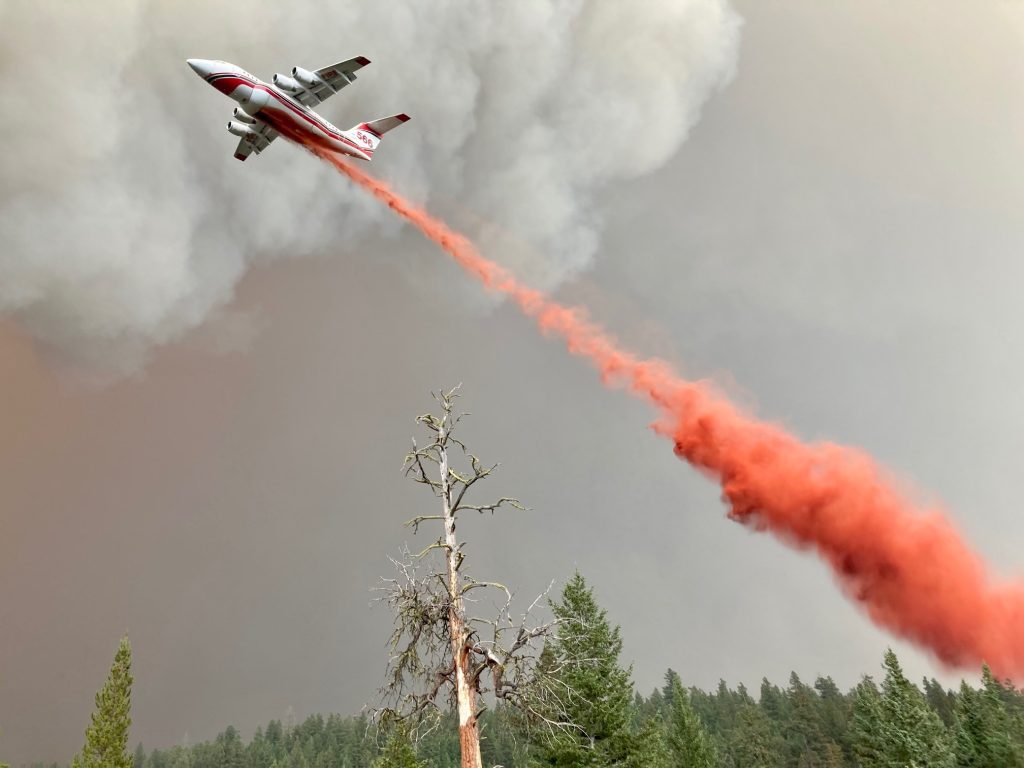This week the province of B.C. experienced sustained daily lightning activity, leading to an increase in new wildfire starts.
When the BC Wildfire Service prepares for weather like this there is always a regional focus on initial attack capacity.
Initial attack is a phase of wildfire response from an initial report through to the first aviation and ground crew responses. Information provided in an initial report helps operational staff determine what resources to send to a fire. Some of the key questions that determine what type of resource and how many to send include the size of the fire, how quickly it is spreading, how close it is to values and what fuel type it is burning in. Learn about the questions the Provincial Wildfire Reporting Centre asks, and why.

Resources who may respond during the initial attack phase include initial attack ground crews, parattack and rapattack crews, helicopters, bird dog aircraft and air tankers.
Over the last week BC Wildfire Service forecasters called for widespread lightning over several days, followed by high winds. Considering this, resources were strategically placed throughout the province based largely on where lightning was forecast and the receptiveness of local fuels to ignition.
The multi-day lightning event began on Wednesday with more than 800 lightning strikes hitting the west coast of Vancouver Island in the morning.
From Wednesday evening through to Friday lightning continued in the central interior and over to the southeast corner of B.C. On Saturday the weather moved northeast, with 14,000 lightning strikes in the Prince George Fire Centre.
Across the province:
- Wednesday: 4,018 lightning strikes
- Thursday: 5,205 lightning strikes
- Friday: 8,607 lightning strikes
- Saturday: 17,684 lightning strikes

Each of B.C.’s six regional fire centres have reported high initial attack success following the last several days of lightning and higher winds.
Since Wednesday there have been 212 new wildfire starts across the province. Unsurprisingly, 80% of those starts were caused by lightning. The cause of 37 of these fires remains undetermined and five were caused by human activity.
69% of all of these fires are classified as Out, Under Control or Being Held.
This means the majority of these fires are extinguished, suppression efforts have ensured the wildfire will not spread any further or that the wildfire is not likely to spread beyond predetermined boundaries under prevailing conditions. Learn more about wildfire stages of control.
A concerted team effort is required to achieve this level of initial attack success.
236 initial attack firefighters are currently working across the province with an additional 128 on standby.

74 helicopters and 33 air tankers are actively supporting suppression efforts on the ground.
During the height of the lightning activity on August 11 and 12, our air tanker teams dropped 431,407 litres of retardant and 283,560 litres of suppressant on 18 initial attack objectives.
In addition to this intentional focus on initial attack, sustained action crews remained busy across the province. Most of these crews are currently assigned to our active wildfires of note. For the latest information on each of these refer to the wildfires of note page.
| Southeast Fire Centre • Briggs Creek • Connell Ridge • Cummings Creek • Weasel Creek |
| Kamloops Fire Centre • Keremeos Creek Prince George Fire Centre • Hasler Flats |
Despite forecasted winds, none of our existing wildfires of note experienced significant growth on Saturday, August 13.
Nonetheless, to be prepared, the Cummings Creek (N11051) wildfire conducted a complex situation-based practice in the community of Sparwood in the event the wildfire should threaten structures.
The Maria Creek wildfire of note, located six kilometres northeast of Pavilion is now classified as Being Held and will no longer be updated through the wildfire of note page.
Our sustained action crews and support personnel are currently located in three fire camps across the province located in Cache Creek, Oliver and Elko.
For an intimate look at life on a sustained action fire, this week we released a behind the scenes look at wildfire operations in a short video called ‘Life at fire camp’ – check it out.
